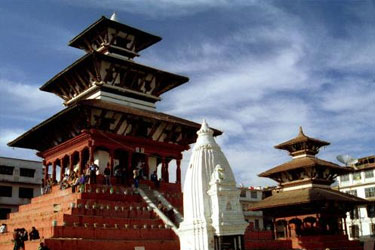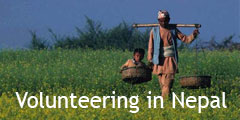Kathmandu City Tour - (1 full day at least. You can chose your pace)

Kathmandu City: is a large city of about 2 million people. It is not to be confused with Kathmandu District which is much larger in size. For our purposes here I will confine our definition of the city to all the areas within Ring Road (or just outside if necessary). No tour is complete without starting at Durbar Square. http://en.wikipedia.org/wiki/Kathmandu_Durbar_Square
Now that we have had our fun and are in a joyous mood (typical of Nepalese culture) it’s time to see some of Nepal’s wonderful history. Don’t leave the Square without something to remember this experience. Maybe a box of tea? Or a prayer wheel? The hats are beautiful and functional also! Let’s begin.
Swayambhunath: A large stupa, highly revered in Nepal, and one of the most sacred Buddhist sites in the country. It offers great views over the city, and no lack of monkeys. It's a 20-30 minute walk from Thamel, or take a taxi or rickshaw. As with the Boudha Stupa, there's no shortage of Buddhist and Tibetan inspired items for sale. There are also drinks for sale at the top, and at least one small restaurant selling momos. For those that have their own transport or have difficulty climbing stairs there is a parking lot at the back entrance that significantly reduces the amount of stairs that need to be climbed to gain access to the main compound. Buying some little thing anywhere here is a kind way to help these hard working people.
Boudhanath Stupa: One of the world's largest stupas of its kind. The unique aspect of this great Buddhist monument is that it is set in the ‘octagonal mandala’ design. Also set into the riches around this huge structure are hundreds of prayer wheels and the ‘108 Images’ of the Buddha adoring the Stupa. Another notable aspect of the area is the presence of about 40 monasteries around the Boudha Stupa.
Narayanhiti Palace Museum: The once Royal palace was turned officialy into a Museum and the Foreign Ministry Office in 2009. Now you can visit the splendid halls of the main building of the palace. Notice the fruit bats hanging from the tall trees? They are a sight especially around sunset when they depart en masse.
Kathmandu Durbar Square: The seat of royalty till the last century, Kathmandu Durbar Square is a wondrous cluster of ancient temples, palaces, courtyards and streets. The most noteworthy among them are the Hanuman Dhoka palace complex, the ‘Living Goddess’ and the ‘Taleja temple’. The square has been in active use since the construction of a palace around 1000 AD. This site is the most popular UNESCO World Heritage Site in Nepal. There are more than a dozen buildings and statues of note in this small area. But for me it’s the sights and sounds as well as the history. Magical in the very early morning and in the evening.
Pashupatinath: An important Hindu temple to Shiva in the form of Lord of Animals. See monkeys, sadhus and a holy cave. Morning is a great time to go.
Thamel: is a popular tourist destination in Kathmandu. It is a full Wi-Fi zone. Thamel has been the centre of the tourist industry in Kathmandu for over 50 years. It began with the ‘hippie’ movement of the 1960’s when many artists came to Nepal and spent weeks in Thamel. It has a concentration of narrow streets lined with small shops selling everything from food and provisions to clothes, walking gear, cakes, pastries, music, etc. The area has many very good restaurants also. It is very crowded, but lots of fun.
The Garden of Dreams: a neo classical historical garden, is situated in the midst of Kathmandu city, Nepal. The Garden was famous as the garden of Six Seasons which was created by late Field Marshal Kaiser Sumsher Rana (1892-1964) in early 1920. After the completion of this Garden, it was considered as one of the most sophisticated private gardens of that time.
Rana Museum: The National Museum of Nepal (Rashtriya Sangrahalaya) is a popular attraction of the capital city. Being about a century old, the museum stands both as a tourist destination and historical symbol for Nepal. Being the largest museum in the country, it plays an important role in nationwide archaeological works and development.

